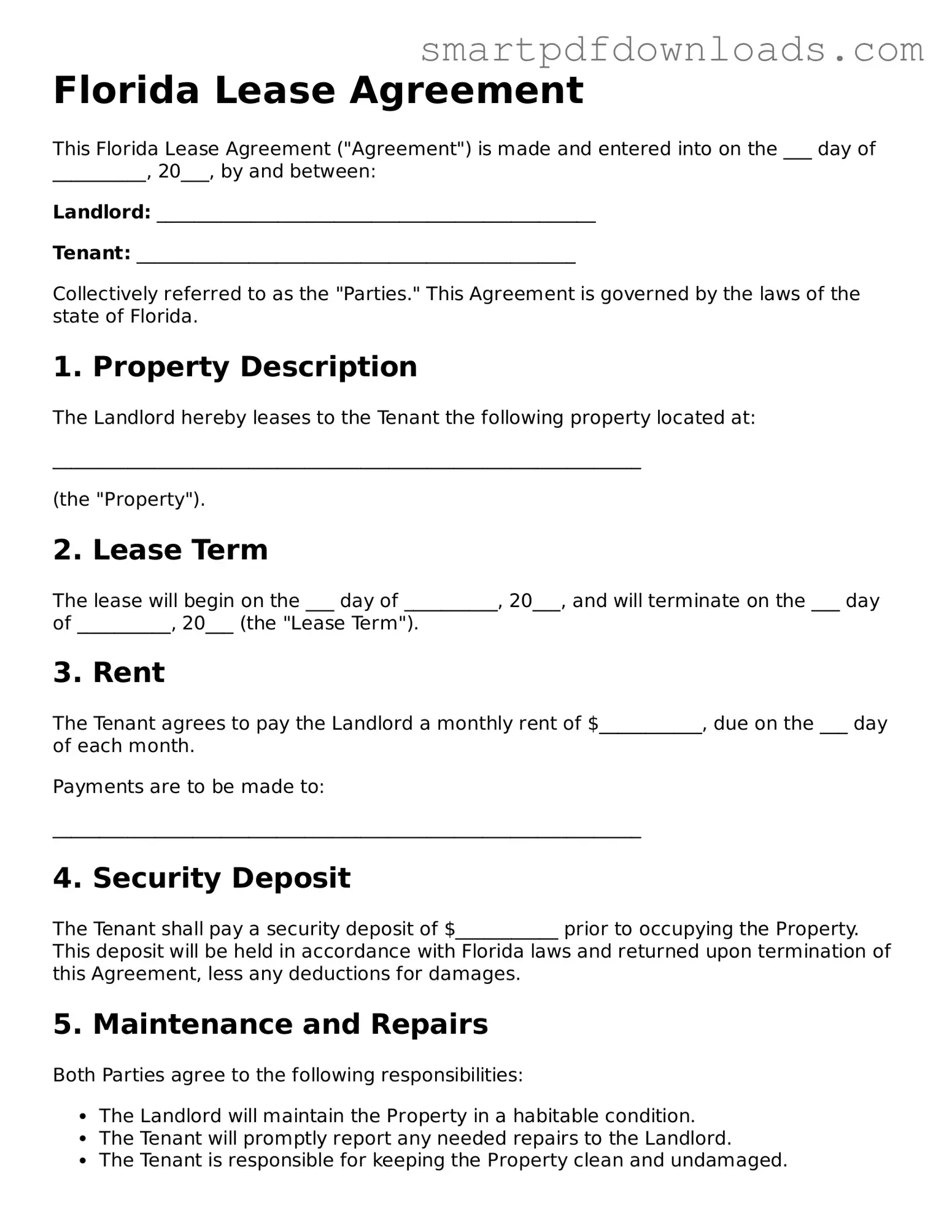Florida Lease Agreement
This Florida Lease Agreement ("Agreement") is made and entered into on the ___ day of __________, 20___, by and between:
Landlord: _______________________________________________
Tenant: _______________________________________________
Collectively referred to as the "Parties." This Agreement is governed by the laws of the state of Florida.
1. Property Description
The Landlord hereby leases to the Tenant the following property located at:
_______________________________________________________________
(the "Property").
2. Lease Term
The lease will begin on the ___ day of __________, 20___, and will terminate on the ___ day of __________, 20___ (the "Lease Term").
3. Rent
The Tenant agrees to pay the Landlord a monthly rent of $___________, due on the ___ day of each month.
Payments are to be made to:
_______________________________________________________________
4. Security Deposit
The Tenant shall pay a security deposit of $___________ prior to occupying the Property. This deposit will be held in accordance with Florida laws and returned upon termination of this Agreement, less any deductions for damages.
5. Maintenance and Repairs
Both Parties agree to the following responsibilities:
- The Landlord will maintain the Property in a habitable condition.
- The Tenant will promptly report any needed repairs to the Landlord.
- The Tenant is responsible for keeping the Property clean and undamaged.
6. Use of Property
The Tenant shall use the Property solely for residential purposes. The Tenant is not permitted to operate any business from the premises without prior written consent from the Landlord.
7. Utilities
The Tenant will be responsible for the payment of all utilities except for:
8. Termination
This Agreement may be terminated under the following conditions:
- By mutual agreement of the Parties.
- If the Tenant fails to pay rent within ___ days of the due date.
- If there is a violation of the terms of this Agreement.
9. Governing Law
This Agreement shall be governed by the laws of the state of Florida.
10. Signatures
In witness whereof, the Parties hereto have executed this Lease Agreement as of the day and year first above written.
Landlord Signature: ______________________________________
Date: _____________
Tenant Signature: ________________________________________
Date: _____________
